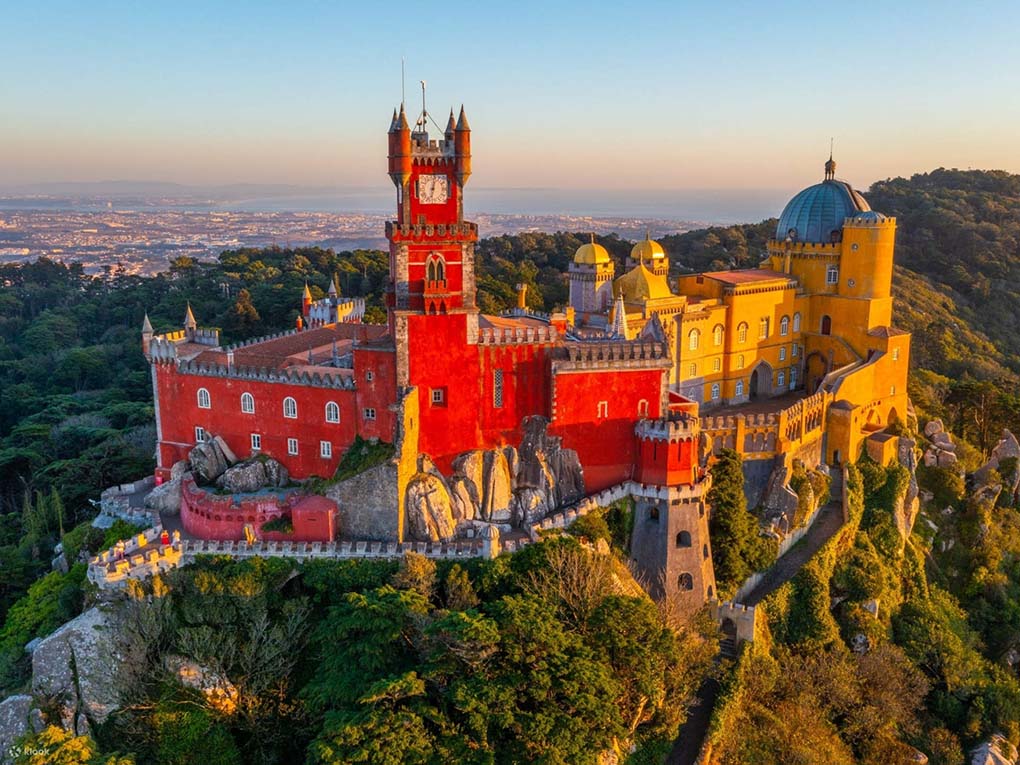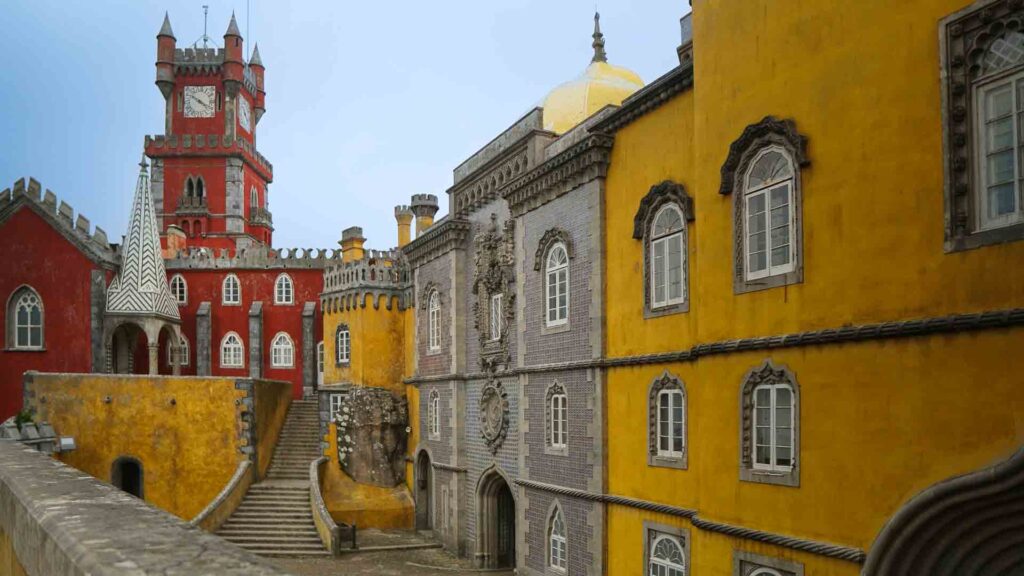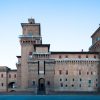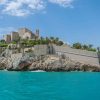Pena Palace
Nestled atop the Sintra Mountains in Portugal, Pena Palace stands as a vivid testament to the Romantic era of architecture. Moreover, this enchanting castle, characterized by its vibrant colors and eclectic design, captures the imagination of all who visit. As one of the most iconic landmarks in Portugal, Pena Palace attracts countless visitors each year, eager to experience its fairy-tale-like charm and historical significance.
Can’t wait to visit the palace? Bour your Pena Palace tour online.
Location of Pena Palace
Pena Palace is located in the Sintra municipality, within the Lisbon District of Portugal. Perched on a hilltop in the Sintra Mountains, it overlooks the town of Sintra and offers breathtaking views of the surrounding landscape, including the Atlantic Ocean. Furthermore, the palace is part of the Cultural Landscape of Sintra, a UNESCO World Heritage Site, recognized for its natural beauty and cultural significance. The location of Pena Palace makes it easily accessible from Lisbon, which is approximately 30 kilometers away, making it a popular day trip destination for tourists.

History of Pena Palace
The history of Pena Palace is as fascinating as its architecture. Originally, a chapel dedicated to Our Lady of Pena stood on the site during the Middle Ages. In 1493, King John II of Portugal and his wife, Queen Leonor, visited the chapel, which eventually led to the construction of a monastery by King Manuel I in 1503. The monastery housed eighteen monks and served as a serene retreat for meditation and worship.
However, the monastery was severely damaged by the Great Lisbon Earthquake of 1755, leaving it in ruins for many decades. It was not until the 19th century that Pena Palace began to take shape as it is known today. In 1838, King Ferdinand II acquired the monastery and surrounding lands. He envisioned a palace that would serve as a summer residence for the Portuguese royal family and embody the Romantic ideals of the time.
The construction of Pena Palace commenced in 1842 under Baron von Eschwege, a German architect and engineer. The design mixed Gothic, Manueline, Moorish, and Renaissance styles, creating a visually striking and eclectic masterpiece. The construction continued for several years. The use of vibrant colors, such as red, yellow, and purple, further enhanced the palace’s enchanting appearance.
By 1854, workers had largely completed Pena Palace, which quickly became a favored retreat for Portuguese royals. King Ferdinand II, passionate about the arts, actively decorated the palace and surrounding parklands. His efforts transformed the area into a picturesque and whimsical landscape. Pena Palace remained a royal residence until the early 20th century, when the Portuguese monarchy was abolished in 1910.

Current status
Today, many people visit Pena Palace, making it one of the top monuments in Portugal. Parques de Sintra, a non-profit organization, manages the palace, preserving Sintra’s cultural and natural heritage. The organization meticulously maintains the palace and keeps it open to the public. Visitors can explore richly decorated rooms, such as the grand dining room, the ornate chapel, and the opulent royal apartments.
The surrounding parklands, known as the Pena Park, cover over 200 hectares. They feature winding paths, lush gardens, and foreign plants. The park offers visitors a chance to enjoy the Sintra Mountains’ natural beauty. Visitors can discover hidden grottoes, tranquil lakes, and stunning viewpoints throughout the park.
The palace also hosts various cultural events and exhibitions throughout the year, further enriching the visitor experience. The palace’s unique blend of architectural styles and its picturesque setting continue to captivate and inspire, making it a must-visit destination for anyone interested in European history, architecture, and natural beauty.
In conclusion, the palace is a remarkable example of 19th-century Romantic architecture, with a rich history and an enduring appeal. Its location, history, and current status as a well-preserved cultural treasure make it a significant and enchanting landmark in Europe. Whether you are a history enthusiast, an architecture aficionado, or simply seeking a magical escape, Pena Palace promises an unforgettable experience.
Admission
Community features
Castle features
Video
Location
Official website
Featured listings














